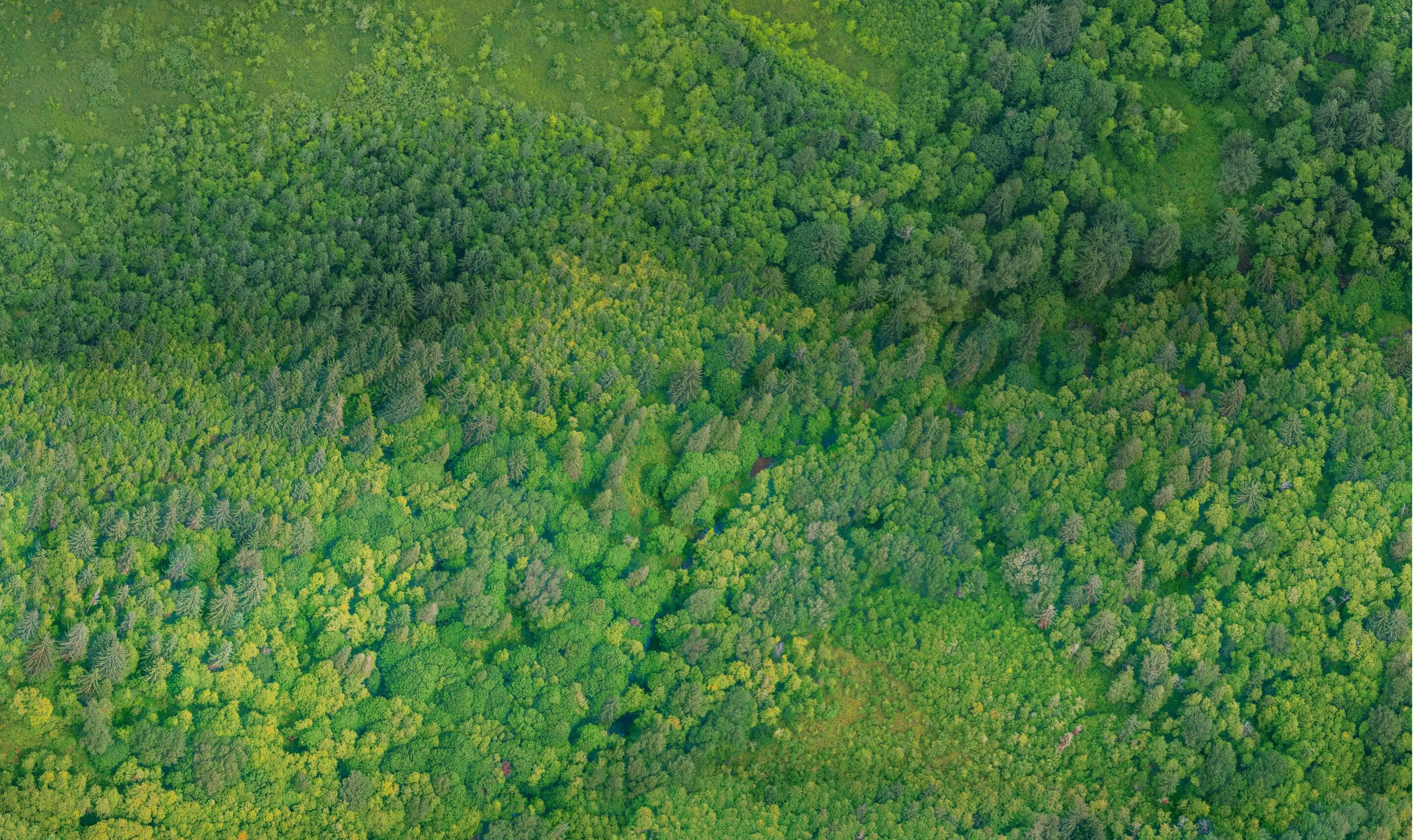Le reboisement par Thierry Gauquelin
.avif)
We are continuing our series of interviews on reforestation with Thierry Gauquelin. It tells us more about the crucial role of plantation programs in the fight against global warming. He also tells us about the best practices to follow to ensure the success of reforestation operations and the benefits of agroforestry.
Thierry Gauquelin is Professor Emeritus at IMBE (Mediterranean Institute of Biodiversity and Marine and Continental Ecology) and at Aix-Marseille University. He is the author of the book published by Harmattan publishing:” Trees and forests, a dictionary to understand these fabulous living organisms.”
1) How do reforestation programs respond to current environmental challenges?
“Trees, carbon sinks”
Trees, through their photosynthesis, constitute carbon sinks capable of removing significant quantities of CO from the atmosphere2 emitted by our human activities. Knowing this, planting trees massively appeared to be one of the possible mitigation solutions in order to fight against climate change. Added to this is the fact that, for various reasons, the carbon sink function of existing forests is diminishing, even if this varies widely between regions of the world. Thus, these plantations can make up for this relative forest deficiency. But these plantations are not always appropriate or effective, especially in this perspective of mitigation. They can even be harmful! The capacity of tree plantations to sequester carbon has in fact undoubtedly been overestimated. And this is all the more so since there are a lot of failures for these plantations. They are in particular linked to the non-adequacy of the species used and to a lack of monitoring of the operations carried out.
“Preserving existing forests”
In addition, the latest studies conducted by Thomas Crowther encourage people to focus today on the potential of existing forests to sequester this carbon. For example, a study published in Nature magazine and co-signed by more than 200 researchers, shows that the conservation, restoration and sustainable management of existing forests is an essential element in achieving global climate and biodiversity goals. It shows that the measured storage is much lower than the natural potential, with a deficit of the order of 226 Gt (remember that the global carbon stock represented by the biomass of terrestrial organisms is of the order of 750 Gt). Potentially, existing forests can still fix a lot of carbon... If they are preserved and restored!
Finally, while this carbon storage per plantation can be effective when promoting fast-growing and commercially profitable species (eucalyptus, rubber, teak, acacia) - up to five tons of carbon per hectare per year - this storage is often ephemeral. Trees are cut down, transformed for example into paper pulp, paper which is then quickly burned, releasing CO2 in the atmosphere.
“A plantation is not a forest”
Last essential element, a plantation is not a forest, it is a much simpler ecosystem, which does not provide the same services. Biodiversity and ecosystem processes are much more complex in the forest. There are billions of exchanges of matter and energy between fauna, flora and soil. It's a very complex dynamic, with trophic chains, organisms that eat each other. But a plantation is basically the same thing as a cornfield. On the other hand, plantations pose a number of problems from an ecological point of view. This is particularly the case concerning the species to be used and the impact of these plantations on soils and biodiversity! Often made from a single species - we are talking about monospecific plantations -, they do not have the same efficiency or the same resilience as mixed populations or natural forests. Often using exotic species, they can even pose a threat to biodiversity... which is the basis for the harmonious functioning of these ecosystems.
Moreover, in most cases, these plantations are preceded by a clear-cut or clean cut, which has devastating effects. This can be understood in the case where the entire population has been destroyed, for example the spruces of the Vosges which were destroyed following an attack by bark beetles. However, it is not justified if only part of the trees in the stand wither away.
Finally, planting in full requires very significant financial resources and the availability of plants is not necessarily guaranteed.

2) What key principles must be respected to ensure the success of a reforestation project?
Of course, the plantations should not be permanently abandoned. Indeed, they present an interesting alternative in difficult and constrained environments. In addition, they offer educational benefits. However, they must in all cases be carried out in a very supervised manner. It is also important that they be monitored and that their impacts and benefits be accurately evaluated. Here are the various best practices to adopt to ensure the success of a reforestation project:
“No monospecific plantation”
Above all, monospecific plantations should not be planted. It is important not to make mistakes again as was and is still the case for the Landes forest reforested with a single species, maritime pine. It is important to carry out multi-specific plantings. They will combine essences with different life traits.
For example, in temperate areas, deciduous or evergreen trees, softwoods and deciduous trees, or species whose root systems exploit different depths in the ground can be planted together. It is also necessary to spread out the planting over several years. This makes it possible to limit the regular nature of this plant as much as possible in order to promote a more complex structure of this plantation. Numerous studies show that, when you have several species in a mix, you have forests that function better and are much more resilient in relation to climate change. For example, the litter they form on the ground can be taken care of by very different, complementary organisms.
” Give priority to native species”
Native species should be preferred, and not introduced exotic species, as has been done a lot with Douglas pine. It is necessary to restrict the systematic use of exotic species in favor of native species, without excluding the use of more distant origins of the latter. Indeed, they are likely to be better adapted to climate change without being invasive and harmful to the balance of local ecosystems. Native species have significant genetic diversity, guaranteeing this necessary adaptation to climate change. It makes it useless, even risky, to use exotic species whose behavior in the medium and long term is unknown and which may, for some, prove to be invasive.

“Choosing the right place for reforestation”
You can't plant just anywhere. For example, not in certain open areas, such as in France, dry orchid lawns, which are environments whose biodiversity is extremely interesting. Nor can it be done in areas with strong protection statuses.
“Take the soil into account”
Soil should also be taken into account. For example, the passage of large vehicles disrupts their structure and biodiversity. The use of inputs (fertilizers, weed killers) must be banned insofar as we want to tend towards a biogeochemical functioning of the ecosystem that is more complex than that of “basic” planting.
“Ensure its maintenance”
Once planted, it is necessary to continue to take care of it, possibly protect it and, above all, assess its success. This is done by monitoring - annually if possible - growth, mortality, etc. The ideal is to be able to involve school children in the whole process. Indeed, these plantations are of great interest from an educational point of view.
3) Why can massive tree planting be counterproductive in the fight against climate change?
If these plantations do not comply with the principles set out above — as is still often the case — the benefits will be low. Moreover, plantations may even pose a threat to biodiversity and the harmonious functioning of ecosystems. And all this without being very effective in the long term in terms of carbon storage.
Finally, it must be considered that in any case, plantations are not the only response to climate change. It is by no means a magic bullet. The preservation of existing forests, free evolution, assisted natural regeneration, assisted natural regeneration, irregular forest, natural afforestation of agricultural land, etc. All these solutions requiring little or no plant production must also be put forward. These are all nature-based opportunities for both mitigation and adaptation to climate change.
4) How can technological and scientific advances be integrated to improve the effectiveness of reforestation programs?
One of the problems with massive plantations is the availability of forest plants by nurserymen. An alternative exists, even if it is necessarily a minority one. This is direct seeding. It is very little used because it offers low yields and the seeds are very expensive. However, in some situations, it can be effective and ensure good resilience. So obviously it concerns spontaneous, non-exotic species, well adapted to stationary conditions. This direct seeding now benefits from very innovative and Hi-Tech techniques. Drones, for example, will deposit seeds on the ground to be reforested in an extremely precise and rapid manner. Locations are defined in advance by field studies and remote sensing. In addition, these techniques are based on current knowledge on the phenomena of competition and facilitation between plant and animal species.
5) How does the involvement of local communities impact the long-term success of reforestation projects, and what approaches are the most effective for engaging them?
Reforestation actions must be part of sustainable land management and taking into account the social and agricultural context. Local populations, especially in developing countries, must be systematically involved in these projects. Consultations are necessary if, for example, it is envisaged to plant trees where pastoral activities already exist. On the other hand, it is essential to be able to monitor these plantations, which have often required significant financial commitments. In Africa, with the Great Green Wall, trees were planted, but afterwards there was no one to water them, maintain them...

6) What are the key elements of successful collaboration between governments, NGOs and the private sector in the field of reforestation?
The awareness on the part of citizens of the importance of forests and natural environments in general is real on a global scale. It will push States to act in this direction. But all the actions put in place, both by States and companies, must be better defined, better controlled and better evaluated scientifically so that they appear to be really beneficial for the planet!
7) Can you share concrete examples of reforestation projects that have achieved positive results in terms of ecosystem restoration?
One of the oldest and most successful reforestation projects was reported in the article by For Science 529 “For reasoned reforestation”. It is about the restoration of the Atlantic forest in Rio de Janeiro, Brazil. From the 16thE In the 17th centuryE century, this forest was gradually destroyed for the use of wood and its replacement by farms growing sugar cane, coffee or raising livestock on pastures. In the first half of the 19th centuryE century, the city experienced severe water shortages. In 1861, the emperor of Brazil Pedro II hired Manuel Gomes Archer to carry out a project to restore the forest, so that it could facilitate the formation of springs by penetrating rainwater into the soil. Thus, between 1862 and 1874, 72,000 seedlings were installed in an area that is now part of the Tijuca National Park. This project, which is now 160 years old, was a pioneer, as it used a large number of different species, mostly native, planted heterogeneously.
8) Can you tell us about agroforestry and its positive impacts on forest cover?
Agroforestry consists of the association of trees, crops and animals on the same plot
It thus includes agro-silvicultural practices (crops and trees), silvo-pastoral practices (trees and animals), or systems with all three components (agro-sylvo-pastoral). It is an important tool for maintaining forest cover in the current context of intense pressure on forests. Faced with global challenges, agroforestry systems are also of interest in responding to the challenge of food security, while producing environmental services, such as carbon storage, soil protection against erosion, improvement of soil quality, positive effects on biodiversity, etc.
The Mediterranean, with Dehesas Spanish, the Montados Portuguese, the argan groves of Morocco show us the example of this agro-sylvo-pastoralism from which modern agroforestry is inspired today.
It is a rational and optimal use of space for the benefit of the tree, the animal and the crops
A tree (oak or cork, argan, olive tree), an animal (pig, bull or goat), a crop (cereals, legumes) and finally the development of a functional and diversified ecosystem. We are reconstructing a bit what nature has built in the complexity of these forest ecosystems. Permaculture on another scale is based on the same principle. But it's all very thoughtful. The trees are spaced far enough apart so as not to compete for water and nutrients. The crops will benefit from the shade of the tree and the particular soil that is gradually developed under its cover, due to the contribution each year of a litter, which, as it decomposes, releases organic matter and nutrients. Livestock and trees are therefore not mutually exclusive. Agroforestry combines them, integrates them into the same coherent and functional whole whereas in other systems, they are spatially separated: fields and pastures on the one hand, hedges and peasant forest on the other hand. The agrosystem, by definition a simplified ecosystem, finds, by mutating into agroforestry space, a higher level of complexity that prevails in more natural ecosystems. The animal component is obviously not mandatory in this “ecological symbiosis”, symbiosis, because each partner finds an advantage in it. Growing in association with trees already has multiple advantages, especially in terms of soil protection... What if, very quickly, climate change forced us, for crops such as vines or other food crops, to create a more or less dense tree cover to limit sunlight and excessive heat... But be careful with water consumption and the competition between these trees for this water that is sometimes so rare.
We are here in the presence of biodiversity shaped, even promoted, by the interactions that societies have maintained with it over the past 10,000 years. In other words, a kind of coevolution of this biodiversity and socio-ecological systems by therefore integrating man as an active component of the system.
Tree and culture are finally not competitors either, even if in the last century, farmers, who already did not like them very much, were taught to do without trees!
A team of European researchers recently showed that in Europe, agroforestry represents 15.4 million hectares, or 8.8% of agricultural land.
This answer from Mr. Gauquelin is partly taken from his book “Trees and Forests, a dictionary to understand these fabulous living organisms.”
Do you dream of concrete actions for the environment? Be a driver of change by joining the campaign HIS SHOOT. Our reforestation projects defy deforestation, promote biodiversity, and offer sustainable opportunities to local communities. Together, let's build a greener and more resilient future.



.avif)



.avif)

.avif)